Kim Goon-Tae, et al.
Evidence-Based Complementary and Alternative Medicine, 2016
Abstract
Annona muricata, commonly known as Graviola, has been utilized as a traditional medicine to treat various human diseases. The aim of this study was to examine the immune-enhancing activity of Graviola leaf extracts in RAW 264.7 macrophage cells. Active ingredients in Graviola leaf extracts (GE) were identified as kaempferol-3-O-rutinoside and quercetin-3-O-rutinoside by LC-MS/MS. When treated with steam or 50% ethanol GE, cell morphology was altered due to initiation of cell differentiation. While the cell viability was not altered by the steam GE, it was reduced by the ethanol GE. Both steam and ethanol GE induced the transcriptional expression of cytokines, including tumor necrosis factor-α (TNF-α) and interleukin-1β, but only the steam extract upregulated inducible nitric oxide synthase (iNOS). In consistence with mRNA expression, the production of TNF-α and nitrite was elevated by both steam and ethanol extracts of Graviola leaves. This is mainly due to activation of mitogen-activated protein (MAP) kinase signaling pathways. These results suggest that Graviola leaves enhance immunity by activation of the MAP kinase pathways. These bioactive properties of Graviola indicate its potential as a health-promoting ingredient to boost the immune system.
Conflict of interest statement
The authors declare no conflict of interests.Figures
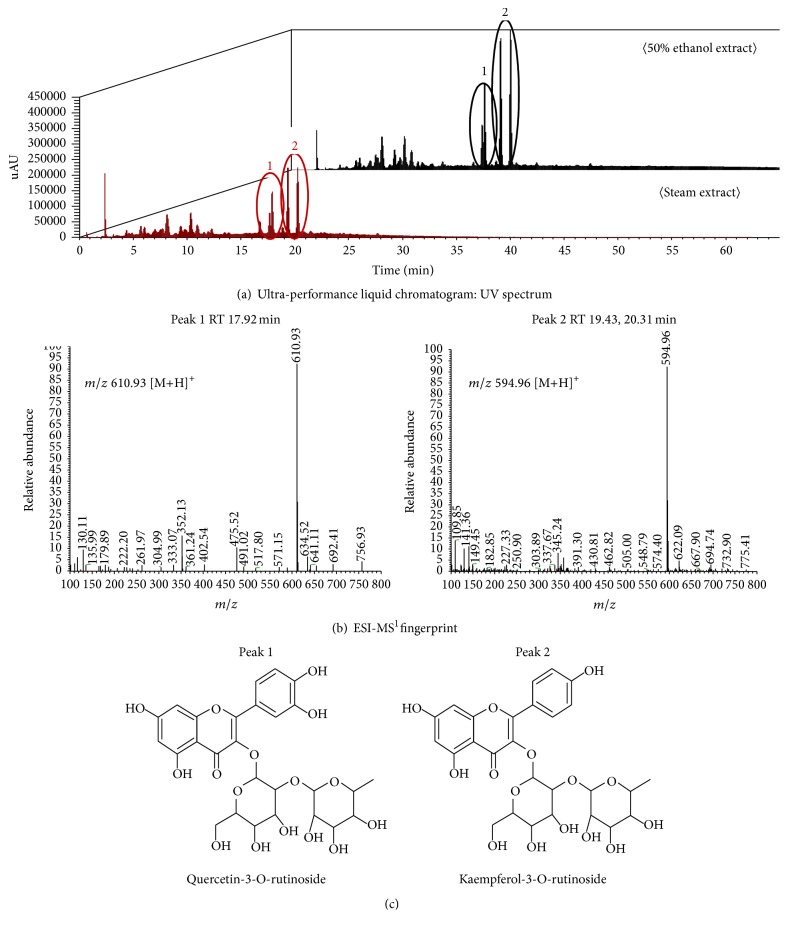
Identification of major components in the steam and 50% ethanol GE. GE were analyzed by UPLC/ESI-MS and the absorbance was measured at 340 nm (a). Major peaks were fingerprinted by identifying major m/z (b) and found to be quercetin-3-O-rutinoside and kaempferol-3-O-rutinoside (c).
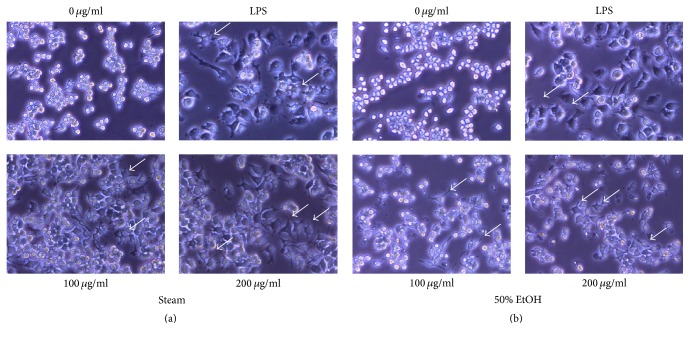
Altered morphology of RAW 264.7 cells after GE treatment. Cells were treated with the steam (a) or 50% ethanol (b) GE for 24 h at various concentrations.
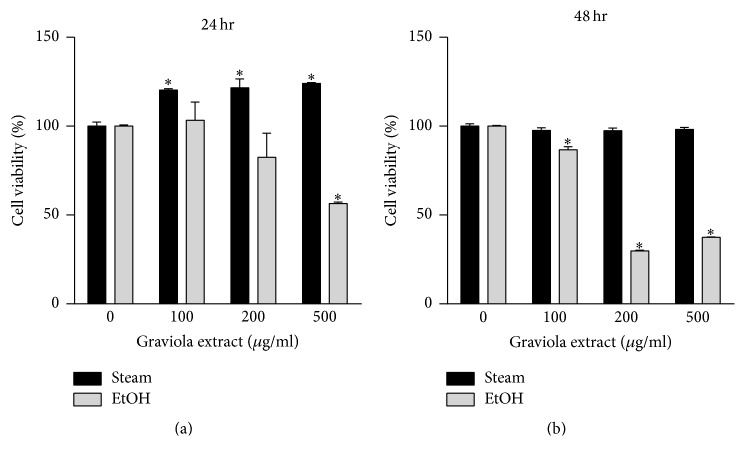
Cytotoxicity of GE in RAW 264.7 cells. Cells were treated with steam or 50% ethanol GE at various concentrations for 24 h (a) or 48 h (b). Cell viability was measured by XTT assay after incubation. The results were expressed as a percentage relative to the vehicle-treated control. The data were expressed as mean ± SEM. ∗ p < 0.05 versus vehicle-treated control.
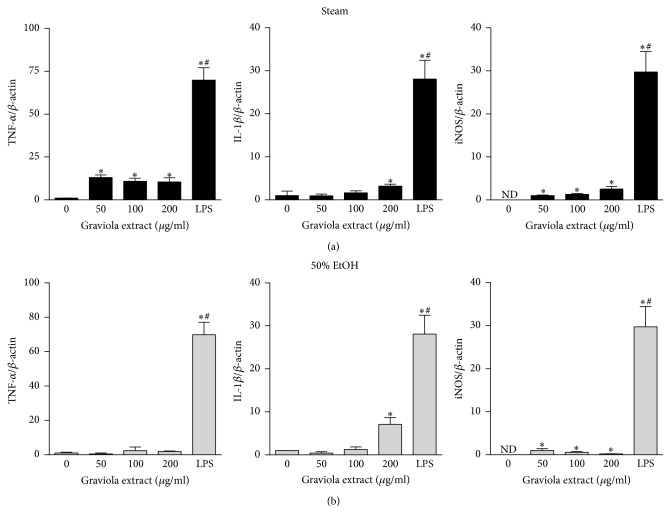
Regulation of expression of cytokines and iNOS by GE. RAW 264.7 cells were treated with the steam (a) or 50% ethanol (b) GE at various concentrations for 24 h. Total RNA was extracted and the expression was measured by real-time PCR. The data were expressed as mean ± SEM. ∗ p < 0.05 versus vehicle-treated control. # p < 0.05 versus GE-treated group. ND, not detected.
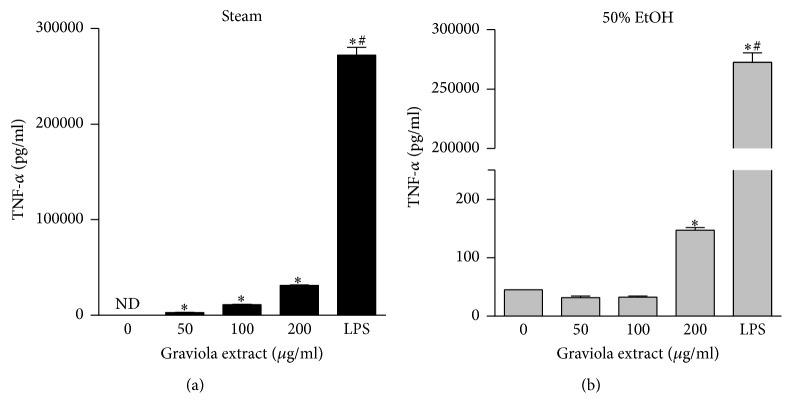
Regulation of TNF-α production in RAW 264.7 cells. Cells were treated with the steam (a) or 50% ethanol (b) GE at various concentrations for 24 h. The culture media were collected and cytokine concentrations were measured by ELISA. The data were expressed as mean ± SEM. ∗ p < 0.05 versus vehicle-treated control. # p < 0.05 versus GE-treated group.
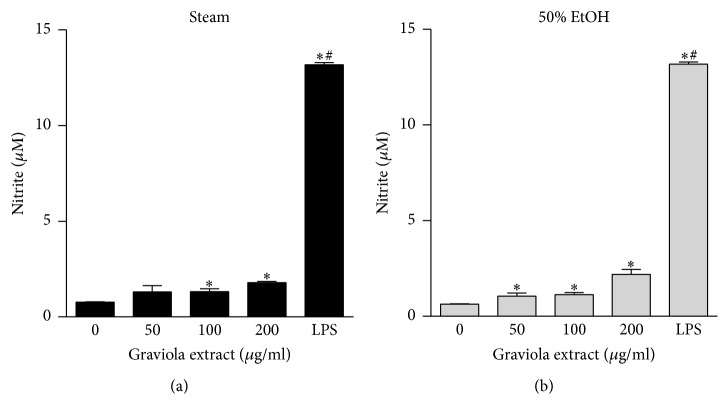
Effect of GE on nitrite production in RAW 264.7 cells. Cells were treated with the steam (a) or 50% ethanol (b) GE at various concentrations for 24 h. The culture media were collected to measure nitrite level using Griess reagent. The data were expressed as mean ± SEM. ∗ p < 0.05 versus vehicle-treated control. # p < 0.05 versus GE-treated group.
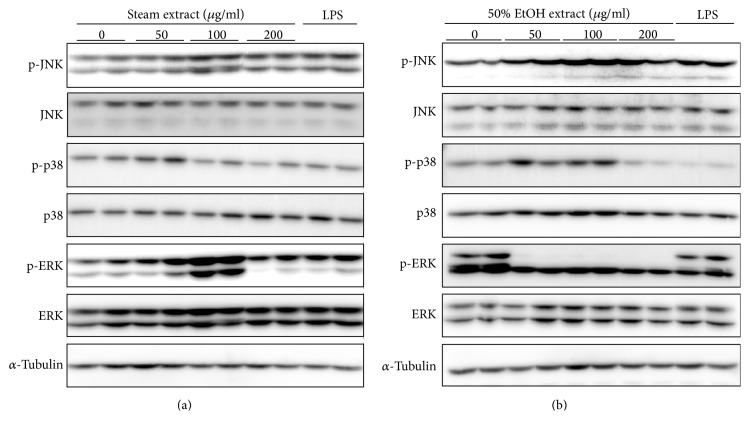
RAW 264.7 cells were treated with either steam (a) or 50% ethanol (b) extract at various concentrations for 30 min. Cells were harvested and protein extracts were analyzed by immunoblotting analyses.
| PMID: | 28096884 |
|---|---|
| DOI: | 10.1155/2016/2905127 |
| PMCID (Free PMC Article): | PMC5209628 |
| Category: | Immune |

























































